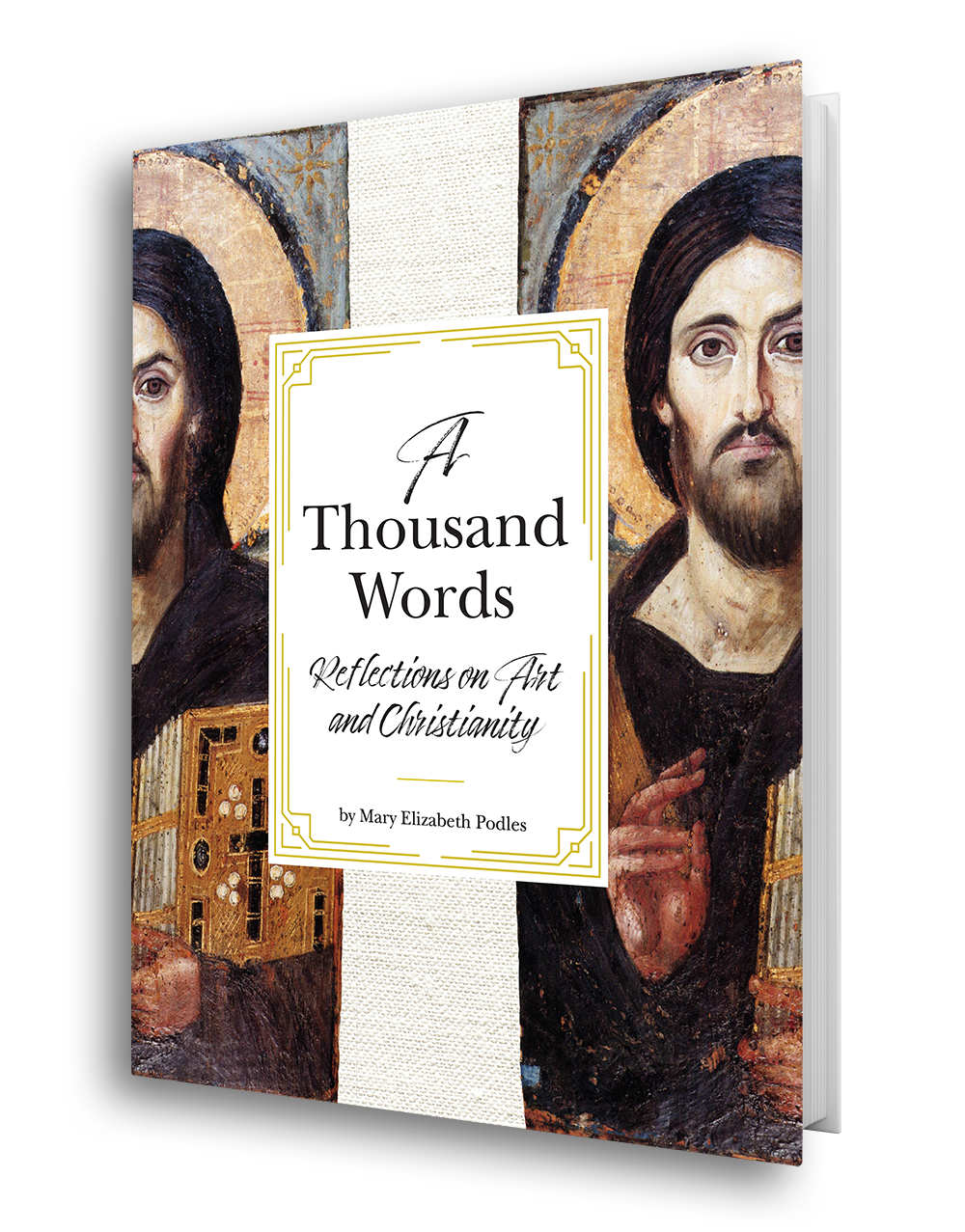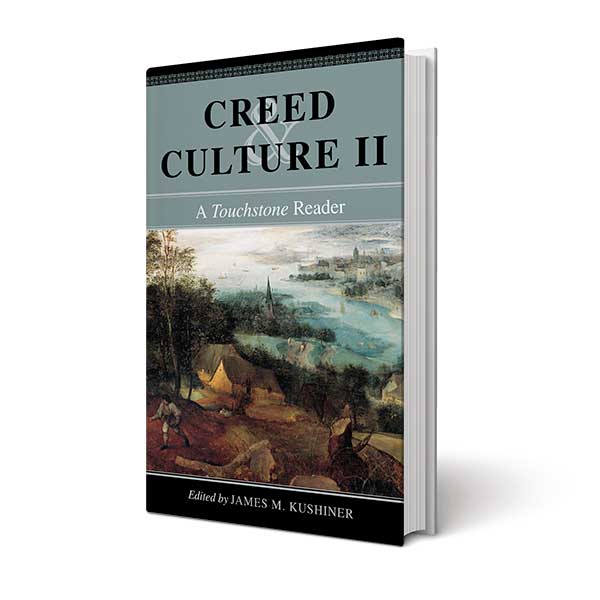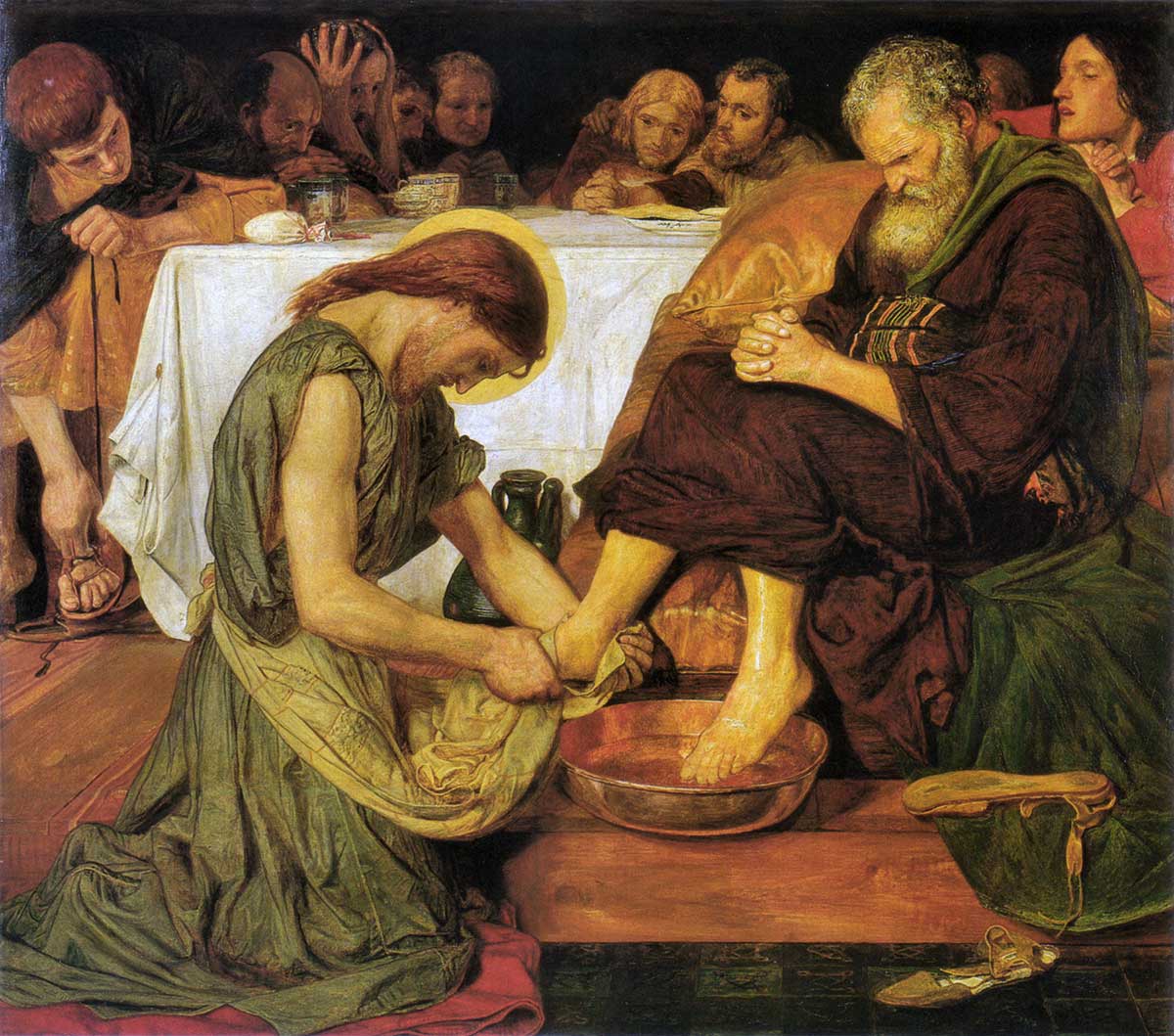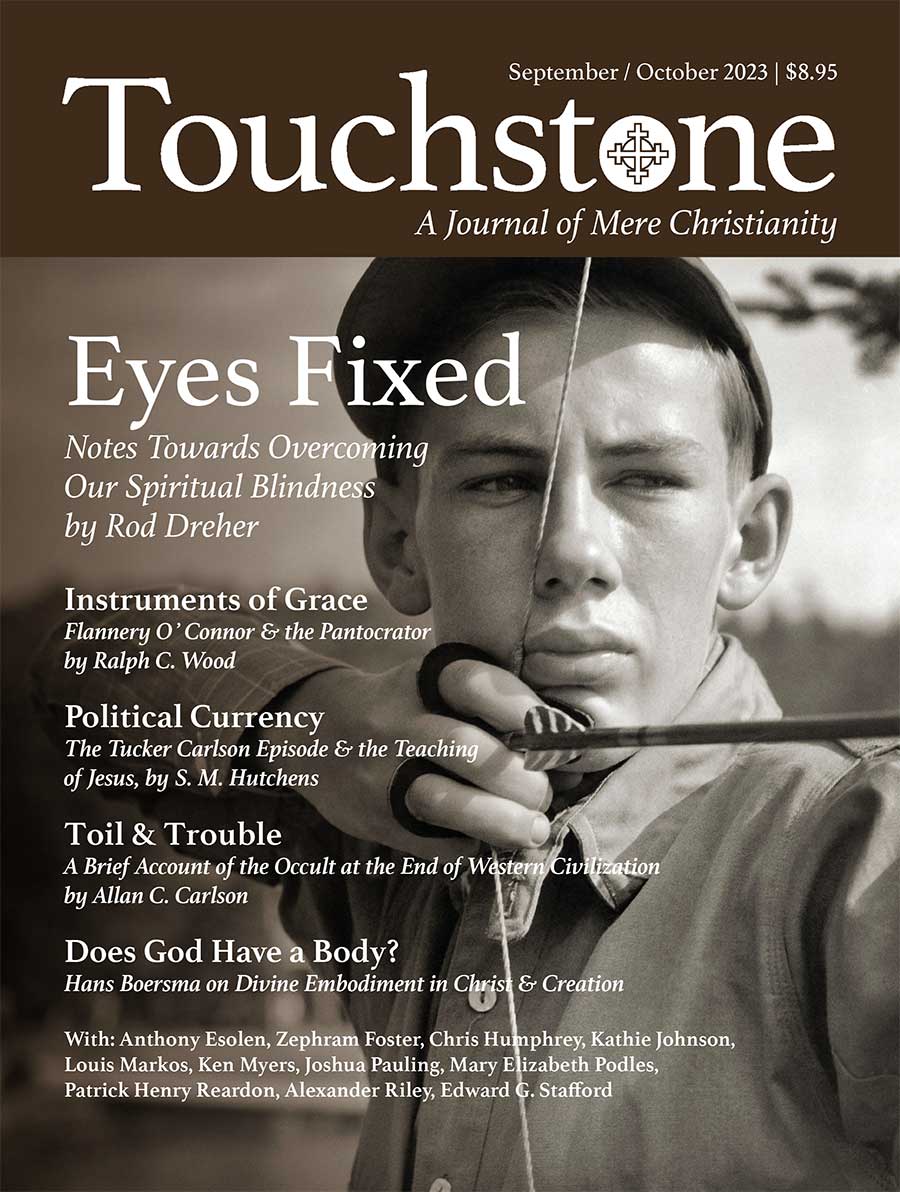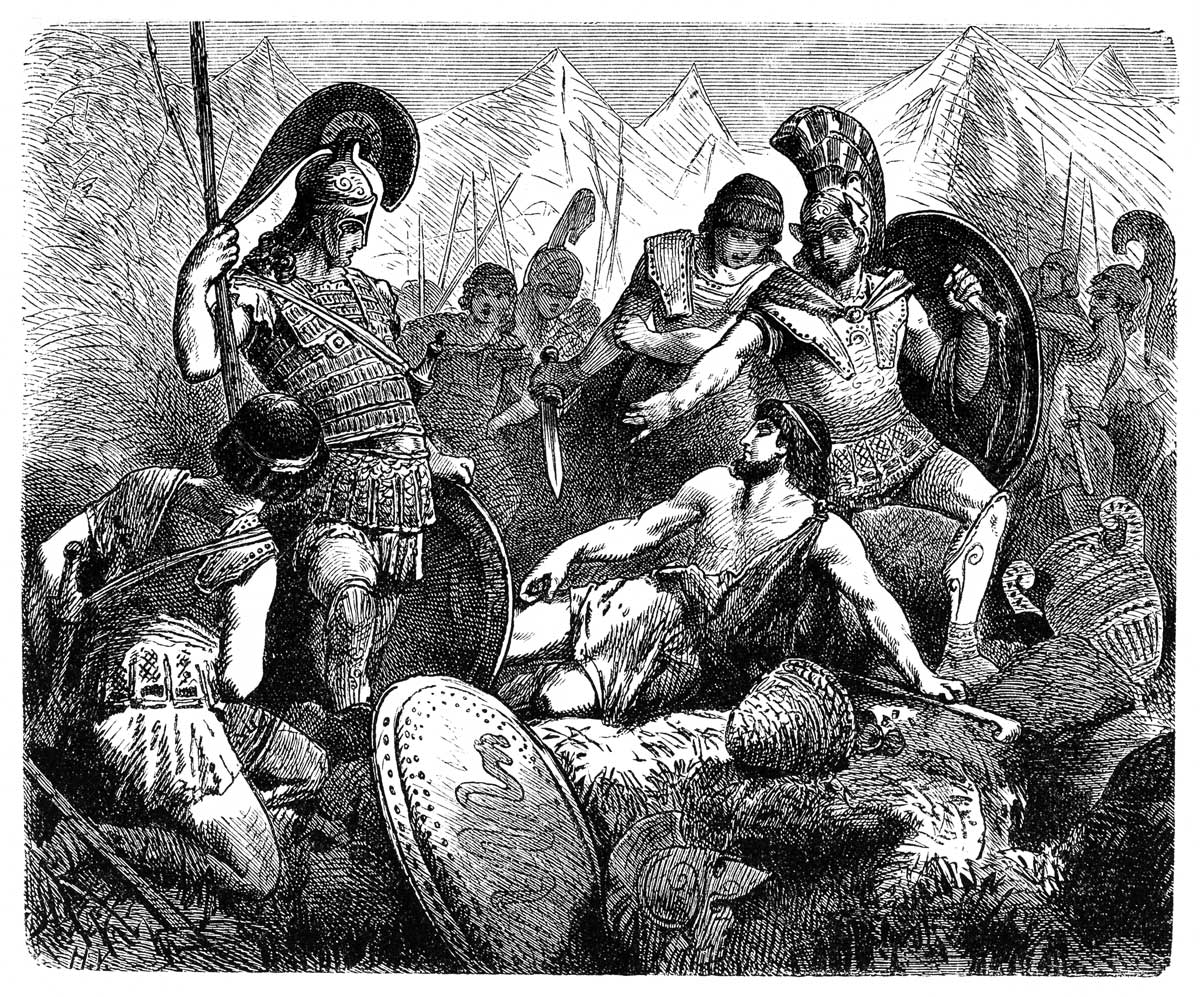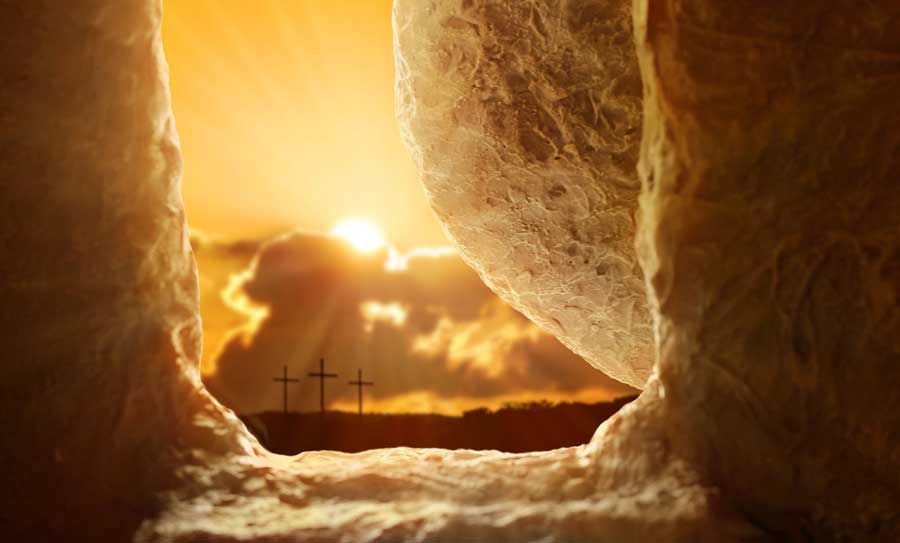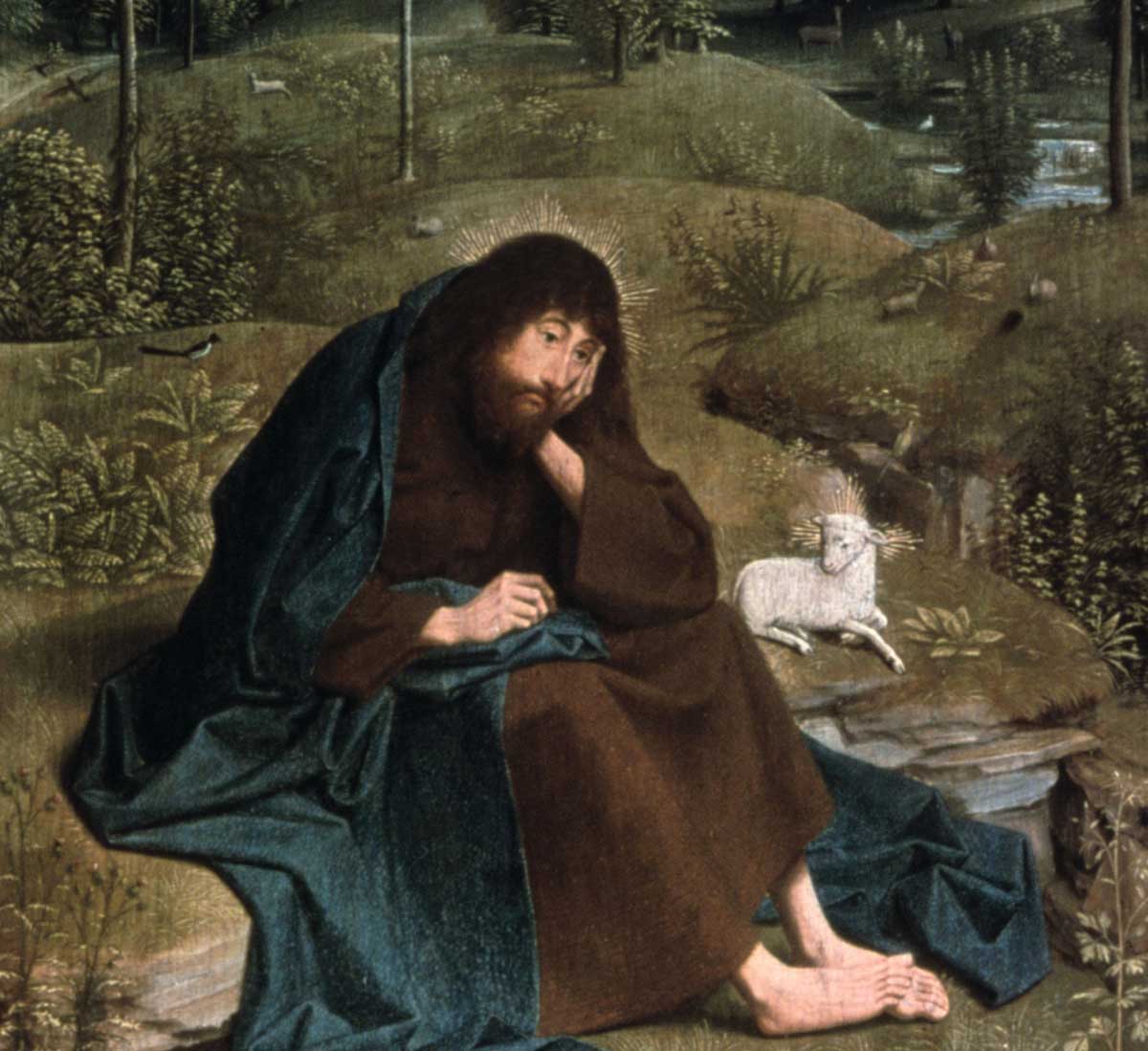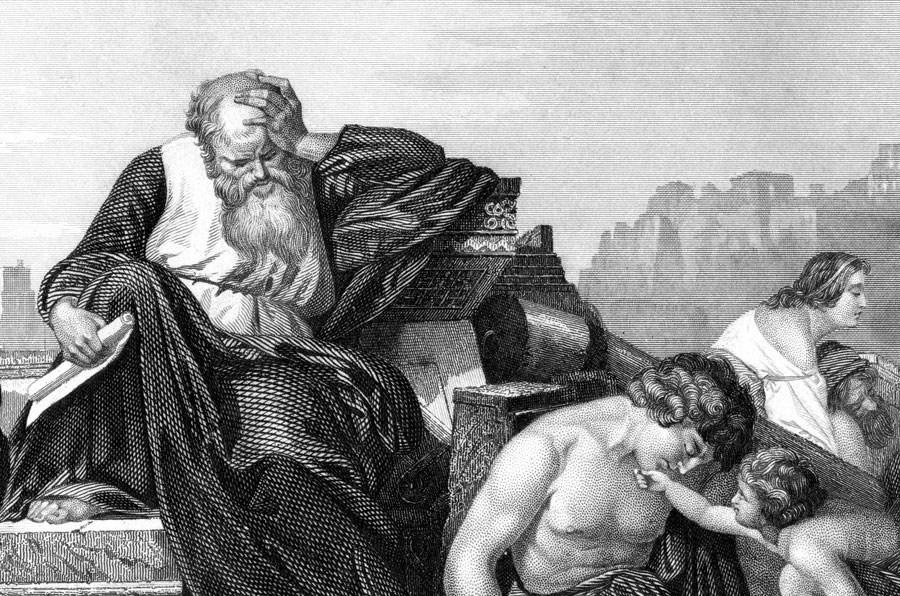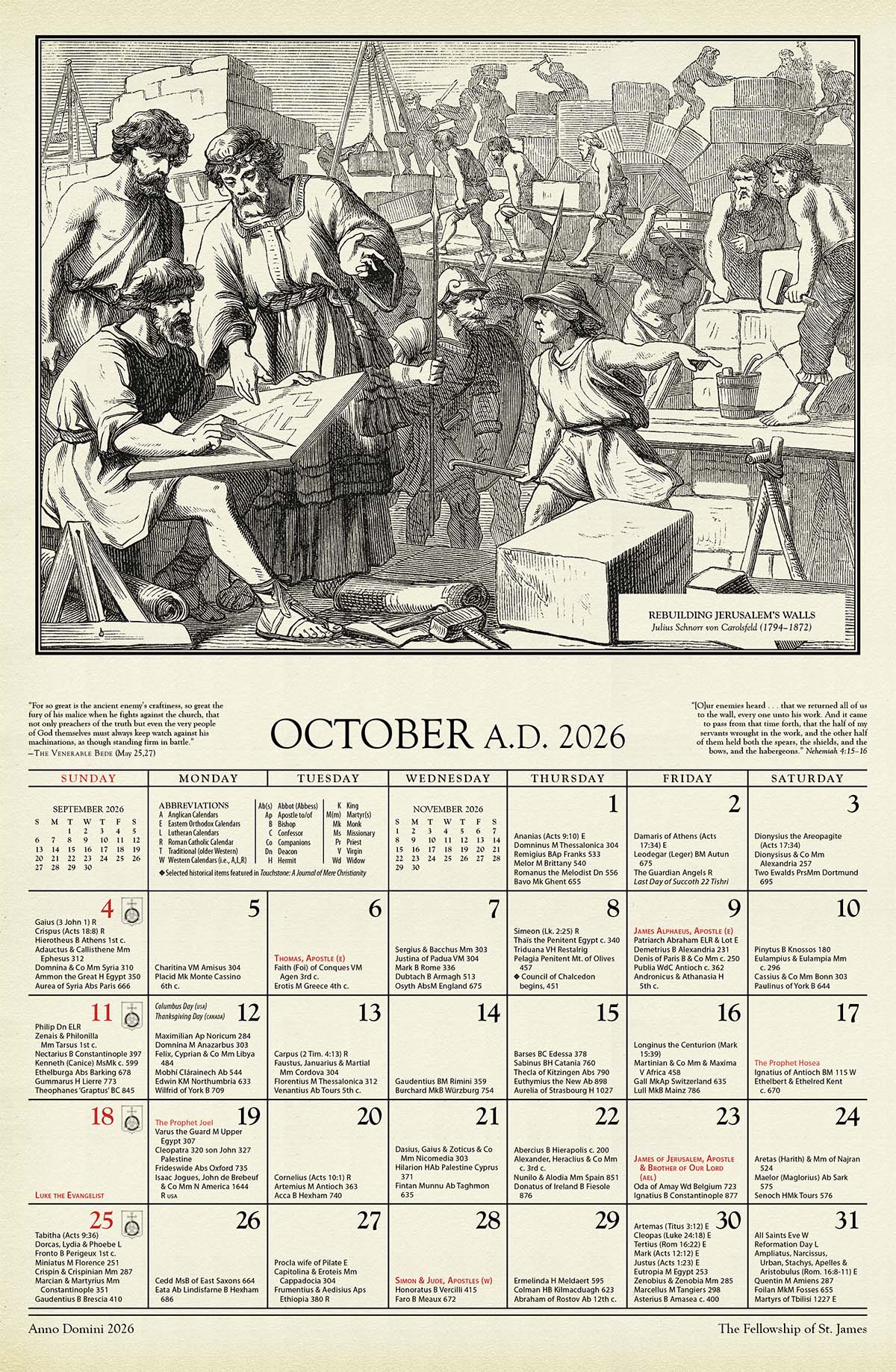Does God Have a Body?
on Divine Embodiment in Christ & Creation
Does God have a body? The very idea may seem preposterous: God is not an animal, whether rational or irrational. The higher up we move on the chain of being, the more ethereal its occupants. Even if, as some maintain, angels, too, have bodies, it would still seem axiomatic to say that God does not. He is spiritual, infinite, and invisible—perfections that appear at odds with an embodied God. The problematic implications of divine embodiment seem obvious: it either makes God human (anthropomorphism), or it confuses him with the cosmos (pantheism).
When St. Augustine asks whether we can see God with bodily eyes, he is at pains to reject the error of the anthropomorphites: “There are some who presume that God is nothing but a body, supposing that whatever is not a body is not a substance at all. I think that we must oppose them in every way” (Ep. 147). Ascribing embodiment to God would seem to drag him down to the human level. Or, at best, it would place him alongside the Greco-Roman gods: Zeus had a body, but his sexual escapades make clear that it was the source of endless trouble. We may well end up anthropomorphizing and mythologizing the Christian faith by ascribing a body to God.
The Christian God may not have a body the way that Zeus had a body, but could the entire cosmos be the body of God? Such a claim, too, would seem intolerable: does it not veer dangerously close to confusing Creator and creature? Pantheism (equating God and universe) has always been considered incompatible with the Christian faith, for it destroys the transcendence of God and ends up justifying whatever exists—whether good or evil—as divine. Pantheizing God is no less troubling than anthropomorphizing or mythologizing him.
And yet. Christianity is not Gnostic. Christians believe in the body as created by God, assumed by God, and raised up by God. And if human bodies matter from exitus to reditus, from beginning to end, then perhaps we ought to think again about whether God, too, might be embodied.
Creation Echoes Incarnation
Our reflections should take their starting point, it seems to me, in the second of the three Christian beliefs just mentioned: the Incarnation. God assumes a body in Jesus Christ. The Chalcedonian Definition (451) serves as the benchmark for an orthodox understanding of the two natures of Christ as unconfused, unchanged, undivided, and inseparable in the one person of the Logos or Word of God. The Incarnation tells us that the eternal Word of God has taken upon himself a human nature—body and soul. We most truly know God in and through his condescension in the humanity of Christ, and we best understand man through his deifying union with God in Christ. God is known in man, while man is known in God. God is embodied—at least in Jesus Christ.
But Chalcedon teaches us something also about God’s general way of doing things, whenever he reveals himself: God’s typical, paradigmatic way of acting is Chalcedonian in character. Chalcedon, therefore, says something not just about the Incarnation, but also about creation: as a theophany of God, creation echoes the truth of Chalcedon. Maximus the Confessor reflects on this echoing of the Incarnation in creation: “The Logos of God (who is God) wills always and in all things to accomplish the mystery of His embodiment” (Ambigua 7.22). Note that Maximus uses the language of “embodiment” (ensōmatōsis). Creation embodies God because it is a manifestation of God, a theophany. The Orthodox theologian Philip Sherrard uses this same Maximian language in The Rape of Man and Nature when he states that “God is always seeking to work the miracle of His incarnation in all men” (22). The reason creation teaches us about God is that God embodies himself in it: creation echoes Incarnation.
To be sure, the Incarnation is unique and unrepeatable. But the embodiment of God in Christ does not preclude his embodiment in creation. Russian philosopher and theologian Semyon Frank asks rhetorically:
The perfect, stable and harmonious combination and balance of the Divine and human natures in [Christ], “without division and confusion,” is exceptional and in that sense miraculous—but does this imply that there can be no other form of combining these two principles in human personality? (Reality and Man, 140)
We should answer Frank’s rhetorical question with a resounding “No.” Indeed, I think God’s embodiment in Christ entails his embodiment also in creation.
Why? The relationship between Incarnation and creation is typological or figurative in character. Just as the wilderness rock is a type of Christ (1 Cor. 10:1–6) and the bronze serpent a figure of the Crucifixion (John 3:14–15), so creation is a type of the Incarnation. In each case, the type (as mere sacramentum) has the function of showing forth, in figurative manner, the truth (or res) that it embodies. Types always already aim at their climactic truth; figures are called into being for the sake of their fulfillment. God does not act aimlessly or randomly when he creates the cosmos: from the outset, his aim with creation, as St. Irenaeus recognized, is nothing less than the Incarnation itself.
Sacramental types or figures—whether rocks, serpents, or creation as a whole—are like their ultimate truth in Christ because they are patterned on it. The climactic sacramental truth or reality is the archetype—the original exemplar that grounds the types. In God’s design, Christ precedes the rock, the Cross calls forth the serpent of bronze, and the Incarnation grounds creation. If the Incarnation is the original, archetypal truth of the Creator-creature relationship, then we should expect each of its types to echo it. Just as the echo of a voice depends upon the original utterance, so God’s embodiment in creation depends upon his embodiment in Christ.
God flings the original, archetypal, or exemplary truth of Christ throughout the cosmos, in time and in space, so that everything that has being reminds us of the truth of Chalcedon. The humanizing of God in the Incarnation reverberates, like an echo, in the humanizing of God in creation. True, this downward movement of God in his embodiment begins, historically, in creation. But ontologically, it originates in the Incarnation. Chalcedon, therefore, speaks truth not just about the Incarnation of the Son of God, but also about every one of God’s actions that precedes and follows it. They all embody the truth of the creator God. God embodies himself—first in Christ, then in all creation.
One Threefold Body
Just as the downward or humanizing movement of God (the exitus from God) is typologically structured, so, too, the upward or deifying movement of man (the reditus to God) is typologically structured. Christ’s embodiment in the Incarnation echoes or reverberates also in the Eucharist and in the Church. We are saved through figurative or typological means that are patterned on the Incarnation. There’s more than a mere verbal similarity between the historical body of Christ and the body of Christ in the Eucharist (1 Cor. 10:16–17) and the Church (e.g., 1 Cor. 12:12–27; Col. 1:24). There’s an ontological identity between the three.
As Henri de Lubac points out in his seminal work Corpus Mysticum, the historical body, the eucharistic body, and the ecclesial body are not three separate bodies; they are one, threefold body. Why? Because the three are typologically linked. In all three, as Maximus might say, the Logos seeks to accomplish the mystery of his embodiment. Redemption is the deifying return of the body of Christ (and thus of all creation) into the fullness of the Church.
God’s Free Action
St. Maximus’s language of embodiment (ensōmatōsis) may be startling. And we do well to be cautious. The dangers of anthropomorphizing, mythologizing, and pantheizing God are not illusory. One could easily use the language of divine embodiment as an excuse to drag God down by reducing him to the world of becoming, as if God realized his own, true being slowly but surely over time. Such an approach meshes God with the world in a deeply problematic manner, for by simply identifying God with this-worldly processes of becoming, one loses sight of his otherness or transcendence in relation to the cosmos. By refusing to bow before the God who is beyond all time and place, Hegelian philosophy and process theology end up with a purely this-worldly or immanent deity—hardly the sovereign God of the Christian tradition.
How can we appropriate the Maximian language of divine embodiment without diminishing or belittling God? The key lies, I think, in the term “embodiment.” Maximus does not call creation “the body of God.” That term, though not problematic per se, might give the impression that God is just like us, one being among many: just as we have bodies, so God, too, has a body. But God does not have a body in the same way that we have a body, for God chooses embodiment. It is an embodiment in which, as Chalcedon teaches, the transcendent God remains transcendent—unchanged in his union with created being, and not to be confused with it.
Though “embodiment” is a noun, it speaks of action: God does something, namely, embody himself. He is free to do so. He is not under obligation; he does not have a body by way of necessity. God longs to be embodied and chooses to be embodied. Embodiment is an act undertaken by a transcendent God. Utterly beyond the changes and vicissitudes of this-worldly beings, God freely assumes man in Christ and freely embodies himself in creation. In fact, it is only because God is utterly transcendent that he can also become immanent in the world. Or, to use Maximian language: because God is beyond-being (hyperousios), he can embody himself in Christ and in the cosmos.
The Need for Re-enchantment
I came to the above reflections through one of Rod Dreher’s recent substacks on enchantment. Dreher’s substack (“Sherrard in Habsburgopolis”) turns to Sherrard in search of re-enchantment, as an antidote to modernity’s vapid materialism. Dreher puts it this way: “There is nothing ‘outside the all-embracing and all-pervading reality of God.’ This is a specific metaphysical claim. Orthodox Christianity, like all small-o orthodox Christianity before the Great Schism, holds that God is everywhere present, and fills all things.”
Dreher’s enchantment is not a lapse into pantheism. He doesn’t treat Creator and creature as one and the same. He adopts instead the Maximian approach, calling for pan--en-theism: everything that exists has its being within the being of God, a God who remains utterly transcendent, while embodying himself in the cosmos. Panentheism, therefore, enchants the world, for, as Maximus already knew, the transcendent Creator embodies himself within creation.
Few projects are as important as Dreher’s on enchantment. The way we talk about the Creator-creature relationship is not a matter of abstract theorizing. To speak of God embodying himself is to acknowledge that God makes himself really or sacramentally present in the world. When we dismiss the language of divine embodiment, we end up separating nature and the supernatural, or heaven and earth. We relegate God upstairs, so that we can do our own thing downstairs. This, it seems to me, has been the modern pursuit.
I have traced the genealogy of this problematic modern project in some detail in my book Heavenly Participation; I won’t go over the same history here. Suffice it to say that I think Sherrard is right to argue that the modern separation between heaven and earth is responsible for the dehumanization of man and the desacralization of nature. Modernity’s disenchantment is reflected in today’s widespread reluctance to acknowledge that God is embodied and that both the exitus (creation) and the reditus (redemption) depend upon this divine embodiment. To become modern means to inhabit a disenchanted, disembodied, and ultimately Gnostic universe.
A Theophanic Site
The beauty of Maximian language—God embodying himself, both in Christ and in creation—is that it reminds us that creation comes from him and goes back to him. Creation is not a machine; it does not have being from itself; it is not autonomous. Nothing God makes is just stuff, for all of creation is made for a supernatural union with God. Chalcedonian Christianity—the shared inheritance of all orthodox Christianity—recognizes the embodiment of God in Christ as the pattern of the cosmos. The Incarnation has unveiled the world as a theophanic site, suffused with the presence of God.
Hans Boersma is the Saint Benedict Servants of Christ Professor in Ascetical Theology at Nashotah House Theological Seminary.
subscription options
Order
Print/Online Subscription
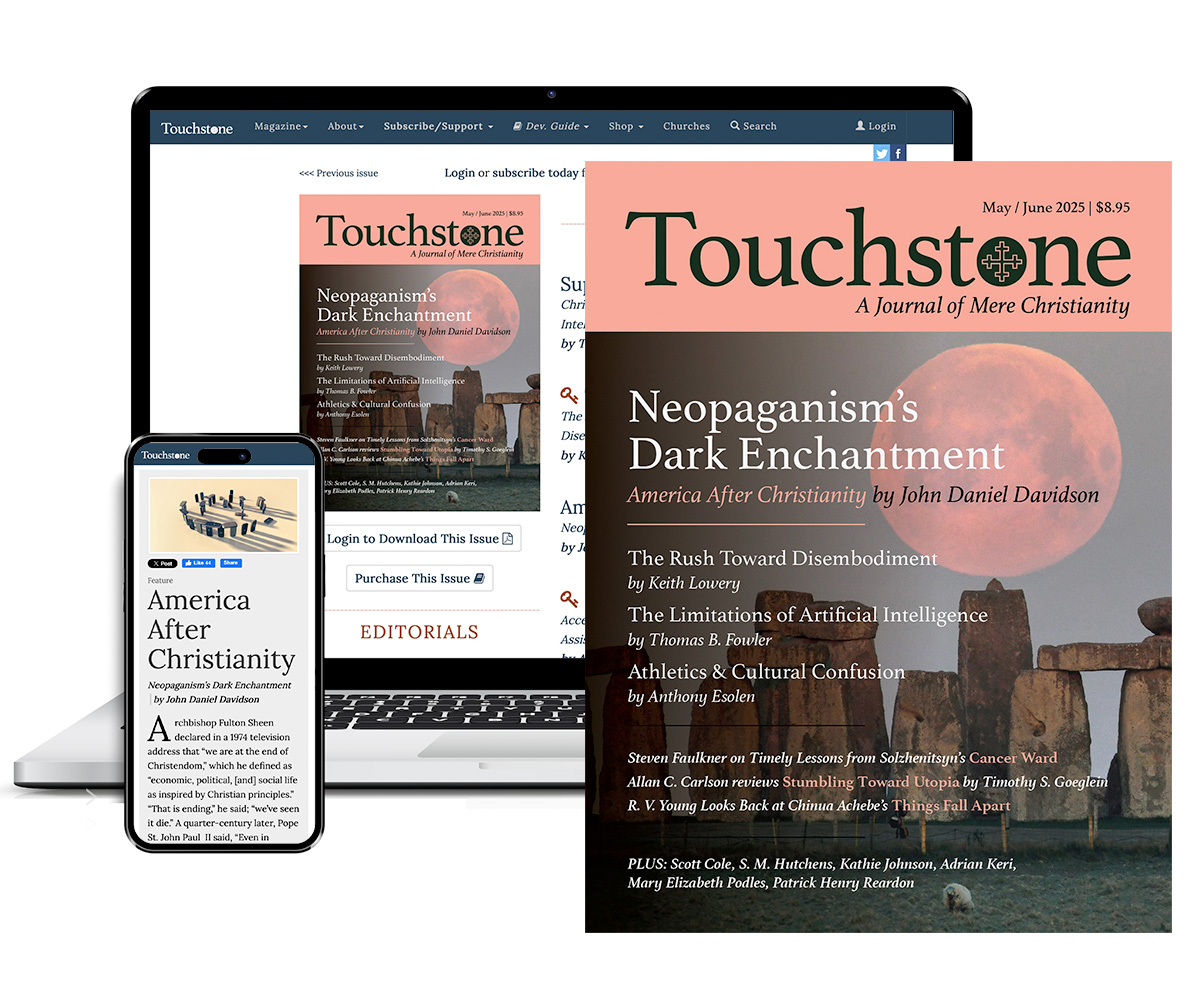
Get six issues (one year) of Touchstone PLUS full online access including pdf downloads for only $39.95. That's only $3.34 per month!
Order
Online Only
Subscription

Get a one-year full-access subscription to the Touchstone online archives for only $19.95. That's only $1.66 per month!
bulk subscriptions
Order Touchstone subscriptions in bulk and save $10 per sub! Each subscription includes 6 issues of Touchstone plus full online access to touchstonemag.com—including archives, videos, and pdf downloads of recent issues for only $29.95 each! Great for churches or study groups.
Transactions will be processed on a secure server.
more on Theology from the online archives
more from the online archives
calling all readers
Please Donate
"There are magazines worth reading but few worth saving . . . Touchstone is just such a magazine."
—Alice von Hildebrand
"Here we do not concede one square millimeter of territory to falsehood, folly, contemporary sentimentality, or fashion. We speak the truth, and let God be our judge. . . . Touchstone is the one committedly Christian conservative journal."
—Anthony Esolen, Touchstone senior editor



